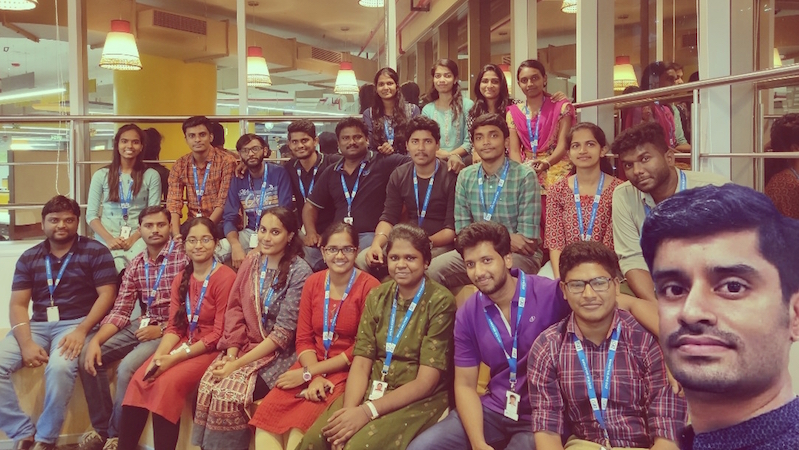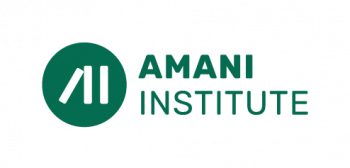Meet Mukhil Anand Asokarajan is a high-energy innovator who leads the product development division at Zifo RnD Solutions. As part of his Business Innovation Project in the Leadership for Growth (L4G) program, Mukhil came up with a solution to increase the efficiency of Zifo’s product development teams, helping them meet their quarterly targets without adding more time, money or resources. He talks about his journey through the program and his transformation as a manager.
Tell us about your company and your role within the organization.
Zifo is a data-driven science company, which offers R&D informatics solutions focused on the industries of pharma, biotech, medical devices, speciality chemicals and other research-based organizations. We work with 7 of the top 10 global bio-pharma companies and our customers are spread across more than 20 countries.
I joined Zifo five and a half years ago, starting in a new division of our technical offerings in which we would integrate all the technical aspects into the lab’s mission and automate much of the process. Our team essentially builds solutions to digitalize the labs in the research and development landscape. Now I am a leader in this sector driving integrations and automation.
What challenges were you facing when joined the L4G program? What did you hope to gain for your organization?
As a team we had this one problem that I had been trying to figure out how to sort out for a couple of years now. During the product development process, we would find ourselves reworking many parts due to various internal and external factors. This would result in more time and effort being put in by each developer and eventually, fatigue, burnout and extension of deadlines. I wanted to address this challenge and make the development process more efficient and exciting for our teams.
How did the process support you to solve your business challenge?
While setting out to solve the problem, I initially imagined a broad range of possible causes for the delays in our product release cycle. I was wondering whether this had something to do with talent management, hiring, skills training or some other broader issue that I might not have considered. During the module on Leading the Business, we learnt useful concepts and tools in innovation and problem solving. This helped me define and understand a problem before jumping to solve it. I was finally able to narrow the root cause down to a process inefficiency in our design as well as development process.
“The program helped me in understanding the problem before jumping to solve it.”
As a next step, instead of simply directing my team on what to do, I decided to take a human-centred design approach to understand their perspective of the situation. I asked each team member about what their vision for the team and project would be if they were given full freedom. ‘What would it look like if you made the best use of your eight hours at work?’
I remember using insights I gained from the MBTI (Myers Briggs Type Indicator) assessment that we did during our training. This helped me understand my own as well as others’ default preferences regarding where they derive their energy from, how they process information and how they make decisions.
“It was quite amazing to see how the same situation can affect each person differently.”
So, during my conversations with my team, it became apparent that the project leads were spending a lot of time on reviewing a developer’s program code and language instead of focussing on design strategy and logic. Developers would only be given a very high level and broad design brief and they had to figure the rest out by themselves. This became stressful for them.
“I realized that instead of spending so much time reviewing multiple drafts of their code, what we needed was a more detailed design logic and blueprint that would help the developers translate it into code more seamlessly.”
In addition to our existing review of the code, I introduced one more review process – this one was focussed on design logic. This meant, before the developers begin their coding, they would be given a detailed design logic and blueprint to review and understand. This helped them get more clarity right from the start. After understanding this, all they needed to focus on was translating this design logic directly into code. The second review process would look at the quality of the code. What was amazing was that we added the extra review process without increasing the timelines or budget of the project.
We tested the idea with different teams and found that there was a significant reduction in the time spent reworking the code. The developers began to report increased levels of satisfaction and happiness in the project. At first, no one thought this would be possible but we managed to come together as a team and take a bold shot at it.
From initially struggling with completing a single review cycle, we are now able to review our product twice, deliver better and in half the time!
How did you manage to get buy in from leadership and other key stakeholders?
One of insights I gained during my project was that any proposed change from the status quo will be met with some resistance from internal stakeholders. I experienced this within my team as well. And soon, I realised that people resist change because it challenges them to come out of their comfort zone. The way to manage it is to understand them and listen to them with empathy. I allowed my team to express their views and have a say in the change that I was proposing. It’s important to see them as allies and not as deterrents to the process.
“When people feel heard, they are more willing to meet you halfway. That was the turning point for me!”
This approach has caught on like wildfire in the team.The project/program leads, like myself, aren’t the ones talking about the new process. The entire team is talking about the new process which is actually influencing other team members and other departments to do it themselves. Now, instead of me pitching these concepts, it’s the team that’s taken the initiative to take it forward and implement it!
So how did the program set you up for success in achieving your goals?
One key thing from the L4G program that helped me find a solution to our efficiency challenge was the training on adaptive leadership. The module helped me with strategies to engage with internal stakeholders.
The crux of the L4G program is developing leadership skills to solve business challenges which includes adaptive training as well as personal growth and development. The program isn’t just about harnessing innovation skills, it’s about leadership holistically. I’ve seen an overall improvement in my ability to handle complex problems at work.
What does the road ahead look like for you?
I am moving to another new area within the organization like I did when I started five and a half years back. As a company, we’re harnessing all our technical expertise and experience to build a new product line and solutions department. I’m excited about demonstrating leadership in as many aspects of my work as possible and helping our collective talent in the organization express its full potential.
Note: If reading this has inspired you to nominate yourself or someone in your team for the upcoming Leadership For Growth program or if you’re looking for more information, head here!





